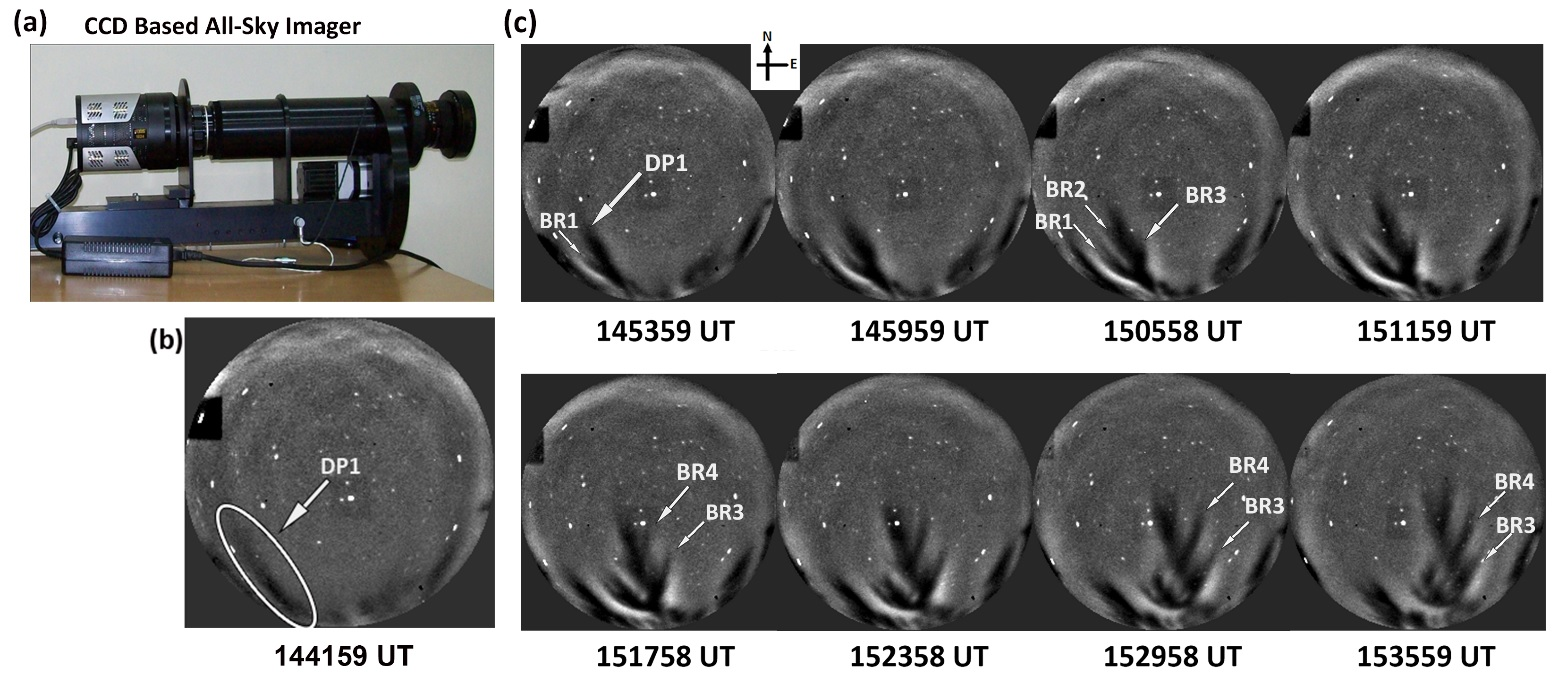At night time, when the Sun stops ionizing the atmosphere, ions formed during the day time in the Earth's geomagnetic equator recombine, forming lower density ionized layers. This is a situation similar to high density fluid resting on a low density fluid, which is a unstable situation. A small perturbation/disturbances at the bottom side of this ionized layer can led to the formation of Equatorial Plasma Bubbles (EPBs), which are turbulent nonlinear structure that drift eastward along with the wind.
Secondary plasma instabilities (SI) can grow on the boundary of these EPBs, which earlier understood to be formed in the wall that is facing the direction from which the wind was blowing, resulting in the notion that structuring on the west wall of eastward drifting depletion under quiet time is common. However, contrary to earlier notions, scientists have detected rare observations of the growth of secondary instabilities (SI) on east wall of eastward drifting Plasma Bubbles in the equatorial ionosphere (an ionizied layer of the atmosphere) over Ranchi located near the crest of equatorial ionization anomaly (EIA) in India. The study can improve understanding of how such structures in the ionized layer of the atmosphere can affect communication systems on Earth.
A peculiar feature of the ionosphere situated approximately 50 -700 kms above the surface of the Earth is the Equatorial plasma bubbles (EPBs) which are electron density irregularities generated through plasma instability. These structures have horizontal spatial scales of few meters to hundreds of kilometers and normally drift eastward in the post-sunset hours. When these EPBs are formed at equator, they can map to off-equatorial stations through geomagnetic field lines. The study of these EPBs, particularly the structuring, is important as these irregularities cause degradation to the incoming radio signal.
A group of scientists from the Indian Institute of Geomagnetism (IIG), an autonomous institute of the Department of Science and Technology (DST), used atmospheric emission from chemical species excited by the incoming solar radiation to track the structuring of plasma bubbles. While previous studies suggested that the west wall of a vertical or non-tilted EPB is subject to SIs in the presence of an eastward neutral wind, but recently, it is observed that instabilities can grow on the east wall of eastward drifting EPBs. This research published in the Journal JGR Space Physics analyzed a westward tilt to the depletion in the absence of geomagnetic storm or westward zonal neutral winds. The scientists concluded that this westward tilt could be one of the reasons for this rare east wall structuring. While these results are interpreted based on a single event, the team is looking for additional resources to understand further about these east wall structuring.
Publication link: https://doi.org/10.1029/2022JA030644

Figure 1: (a) CCD Based All-Sky Imager at IIG, (b-c) All-sky imager 630 nm nightglow images showing different depletions observed during 14:42–15:00 UT (2012–2030 IST). Time stamp information is in hhmmss format. DP1 (marked in (b)) is the prominent depletion that showed structuring on both the walls. Branching that emerged on its west wall is BR1 & BR2. BR3 and BR4 are the east wall branching of DP1 that evolved with time.






























